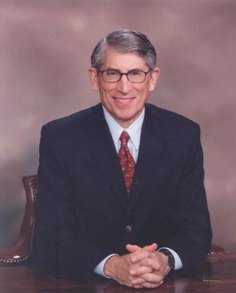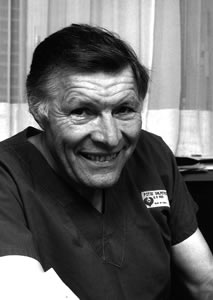Related Research Articles
Stanford University School of Medicine is the medical school of Stanford University and is located in Stanford, California. It traces its roots to the Medical Department of the University of the Pacific, founded in San Francisco in 1858. This medical institution, then called Cooper Medical College, was acquired by Stanford in 1908. The medical school moved to the Stanford campus near Palo Alto, California, in 1959.

Cardiothoracic surgery is the field of medicine involved in surgical treatment of organs inside the thoracic cavity — generally treatment of conditions of the heart, lungs, and other pleural or mediastinal structures.

Cardiac surgery, or cardiovascular surgery, is surgery on the heart or great vessels performed by cardiac surgeons. It is often used to treat complications of ischemic heart disease ; to correct congenital heart disease; or to treat valvular heart disease from various causes, including endocarditis, rheumatic heart disease, and atherosclerosis. It also includes heart transplantation.

Sir Magdi Habib Yacoub, is an Egyptian retired professor of cardiothoracic surgery at Imperial College London, best known for his early work in repairing heart valves with surgeon Donald Ross, adapting the Ross procedure, where the diseased aortic valve is replaced with the person's own pulmonary valve, devising the arterial switch operation (ASO) in transposition of the great arteries, and establishing the heart transplantation centre at Harefield Hospital in 1980 with a heart transplant for Derrick Morris, who at the time of his death was Europe's longest-surviving heart transplant recipient. Yacoub subsequently performed the UK's first combined heart and lung transplant in 1983.

Randall Bertram Griepp was an American cardiothoracic surgeon who collaborated with Norman Shumway in the development of the first successful heart transplant procedures in the U.S. He had an international reputation for contributions to the surgical treatment of aortic aneurysms and aortic dissection and in heart and lung transplantations. He received nearly $8 million in grants from the National Heart, Lung, and Blood Institute.

Lawrence H. Cohn, was an American-born pioneering cardiac surgeon, researcher, and medical educator. He had been on the surgical staff at Harvard Medical School since 1971 and had been a Professor of Surgery at Harvard Medical School since 1980. In 2000, he was awarded the first endowed Chair in Cardiac Surgery at Harvard Medical School.
Norman Edward Shumway was a pioneer of heart surgery at Stanford University. He was the 67th president of the American Association for Thoracic Surgery and the first to perform an adult human to human heart transplantation in the United States.
Richard Rowland Lower was an American pioneer of cardiac surgery, particularly in the field of heart transplantation. Lower was born in Detroit, attended Amherst College, and received his medical degree from Cornell University in 1955. Lower and Norman Shumway developed many of the techniques required to conduct successful heart transplantation, including the use of hypothermia and the orthotopic technique, which became the standard technique for cardiac transplantation.

Sir Terence Alexander Hawthorne English is a South African-born British retired cardiac surgeon. He was Consultant Cardiothoracic Surgeon, Papworth Hospital and Addenbrooke's Hospital, Cambridge, 1973–1995. After starting a career in mining engineering, English switched to medicine and went on to lead the team that performed Britain's first successful heart transplant in August 1979 at Papworth, and soon established it as one of Europe's leading heart–lung transplant programmes.
Sharon Ann Hunt is a cardiology professor and Director of the Post Heart Transplant Programme in Palo Alto, California and is affiliated with Stanford University Medical Center, professionally known for her work in the care of patients after heart transplantation.
Margaret Allen is an American cardiothoracic surgeon and an academic at the Benaroya Research Institute. She was the first woman to perform a heart transplant and is a former president of the United Network for Organ Sharing.
John Charles Baldwin was an American cardiac surgeon and academic administrator. He served as the surgery department chairman at Baylor College of Medicine, as dean of Dartmouth College's Geisel School of Medicine, as president and CEO of the Harvard Immune Disease Institute, and as president of the Texas Tech University Health Sciences Center.
Robert Samuel Decosta Higgins MD, MSHA is an American surgeon known for his expertise in heart–lung transplants. He is president, Brigham and Women's Hospital; Executive Vice President, Mass General Brigham.

Christian Emile Cabrol was a French cardiac surgeon best known for performing Europe's first heart transplant at Pitié-Salpêtrière Hospital in 1968.
Philip Caves (1940–1978) was an Irish cardiothoracic surgeon. In 1972, while at Stanford University, he pioneered the use of the bioptome and transvenous endomyocardial biopsy in the early diagnosis of heart transplant rejection. It was considered the most significant advance in antirejection therapy of the time. Awarded the British American Research Fellowship in 1971, Caves worked with pioneering cardiothoracic surgeon Norman Shumway at Stanford and became staff surgeon leading the transplant programme by 1973. A year later he went to Edinburgh as a senior lecturer in cardiac surgery, where he became particularly interested in pediatric cardiac surgery.

The International Society for Heart and Lung Transplantation (ISHLT), established in 1981, is a professional organization committed to research and education in heart and lung disease and transplantation. It holds annual scientific meetings and publishes The Journal of Heart and Lung Transplantation. It also holds the worlds largest registry of heart and lung transplant data.

Stuart William Jamieson is a British cardiothoracic surgeon, specialising in pulmonary thromboendarterectomy (PTE), a surgical procedure performed to remove organized clotted blood (thrombus) from pulmonary arteries in people with chronic thromboembolic pulmonary hypertension (CTEPH).
Jack Greene Copeland is an American cardiothoracic surgeon, who has established procedures in heart transplantation including repeat heart transplantation, the implantation of total artificial hearts (TAH) to bridge the time to heart transplant, innovations in left ventricular assist devices (LVAD) and the technique of "piggybacking" a second heart in a person, while leaving them the original.
Edward B. Stinson is an American retired cardiothoracic surgeon living in Los Altos, United States, who assisted Norman Shumway in America's first adult human-to-human heart transplantation on 6 January 1968 at Stanford University.

Andrew Logan, FRCS, FRCSEd was a British cardiothoracic surgeon. For most of his career he worked in Edinburgh where he established the specialty of cardio-thoracic surgery. He devised a mitral valve dilator to treat mitral stenosis and this technique, modified by Oswald Tubbs and by Russell Brock, became widely used to treat this condition. He assisted at the first pneumonectomy in the UK and performed the first lung transplant in the UK.
References
- ↑ "5 Questions: Bruce Reitz recalls first successful heart-lung transplant". News Center. Retrieved 30 January 2019.
- ↑ Oransky, Ivan (2006-03-18). "Norman Shumway". The Lancet. 367 (9514): 896. doi:10.1016/S0140-6736(06)68370-0. ISSN 0140-6736. PMID 16575948. S2CID 54275865.
- ↑ Shumacker, Harris B. (1992). The Evolution of Cardiac Surgery. Indiana University Press. ISBN 9780253352217.
- ↑ Albert, Richard K.; Spiro, Stephen G.; Jett, James R. (2008). Clinical Respiratory Medicine. Elsevier Health Sciences. ISBN 9780323048255.